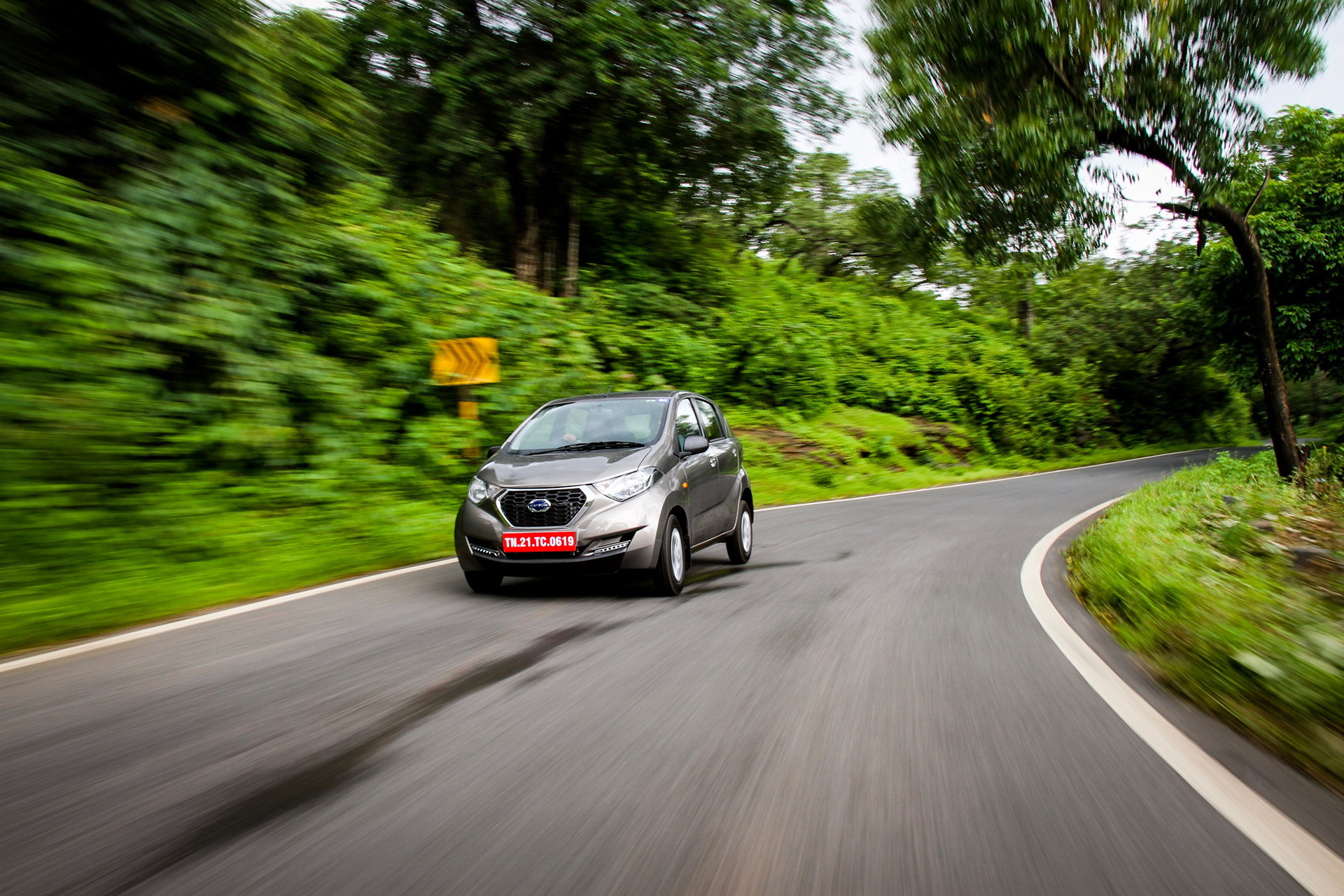Datsun Redi-Go 1.0L Review

Datsun is a relatively new player in the Indian market. In the last three years, the Japanese car maker has sold more than 90,000 cars, which is no small feat, considering the product line-up. The Go and Go+ sales have been considerably poor, but the Redi-Go has been selling in the range of 2-4k units per month, since its launch last year. Datsun has bigger plans for its entry-level hatch and has now plonked a 1-litre engine, derived from its cousin, the Kwid. Will this Redi-Go 1.0L bring more customers to the Datsun showrooms?

What’s new?
The 999cc engine has been doing duty in the Renault Kwid for a few months now. The same unit has made its way under the tiny hood of the Redi-Go. No changes have been made to the i-Sat engine, as Datsun likes to call it. It makes 67bhp at 5500rpm and 91Nm at 4250rpm, which is sufficient for a car it’s size. Renault and Datsun have not mentioned the kerb weight of their respective cars, so it is difficult to gauge the power to weight ratio. We expect an addition of 20-30kg over the 0.8-litre powered Redi-Go.
In terms of cosmetics, there is not much to differentiate the Redi-Go 1.0L. It gets a chrome strip on the bootlid, a chrome tipped exhaust (seen on the Sport variant) and a 1.0 badge. On the inside, it gets silver inserts on the steering and AC vents and that’s it.

Drivability?
The 0.8-litre variant had a prominent lack of power, especially when the car was loaded to the brim. The same cannot be said about the Redi-Go 1.0L. We drove it around the mighty ghats of Chorla and the power felt adequate. The power band lies between 2000rpm and 5000rpm, but after 4000rpm, the engine gets cranky and it is best to upshift before it does that. Also, you have to downshift if the engine falls below 2000rpm as it struggles to gain momentum. This is pronounced higher in the second and third ratios, as they’re slightly taller. The Redi-Go 1.0L cruises at 100kmph in the fifth gear at a relaxed 2300rpm. Overall, the engine has obviously improved the drivability of the tiny hatch but it’s not the peppiest motor in the market, for sure.

The ride and handling is evenly balanced and the hatch feels predictable through corners. Obviously, there is quite a lot of body roll at high speeds thanks to a raised suspension and tall stance. Sudden direction changes at high speeds lead to nervousness but that is expected. Handling around winding sections is manageable, although you cannot compare its agility with the Kwid. It’s best to do the job cautiously to keep all the four wheels on the ground. The steering is vague and dead at the centre. It lacks feel and keeps you guessing when being pushed around corners with the exact amount of input required. But again, this is not a ‘hot hatch’ and is best enjoyed with sedate driving manners.

Value for money?
We would have loved to see Datsun offer safety features such as dual airbags and ABS, at least as an option. But clearly, that hasn’t been the case. Maybe the budget hatch market hasn’t yet matured enough to understand the importance of safety aspects in a road going car.
Datsun has started accepting bookings for the Redi-Go 1.0L and the launch is expected to happen on July 26. The prices have not been announced yet although we expect Datsun to charge a premium of Rs 20-40,000 over the 0.8-litre variant. At this price, the Redi-Go 1.0L makes for a practical option as it gets decent space, sufficient grunt and a massive ground clearance (185mm). It is expected to be undercut the Kwid but then it also loses on the touchscreen, digital instrument cluster and Renault’s service network.


